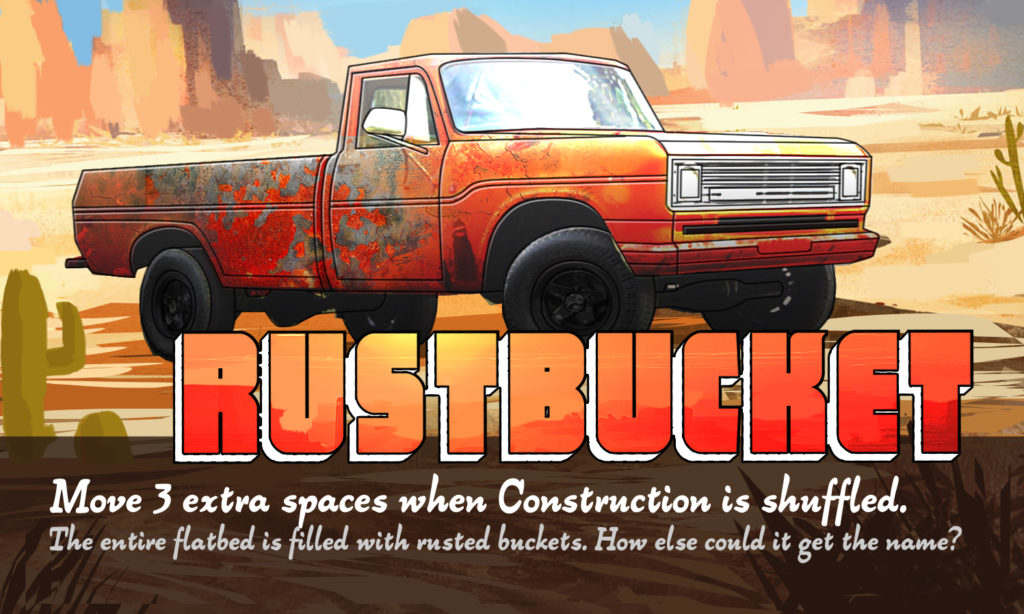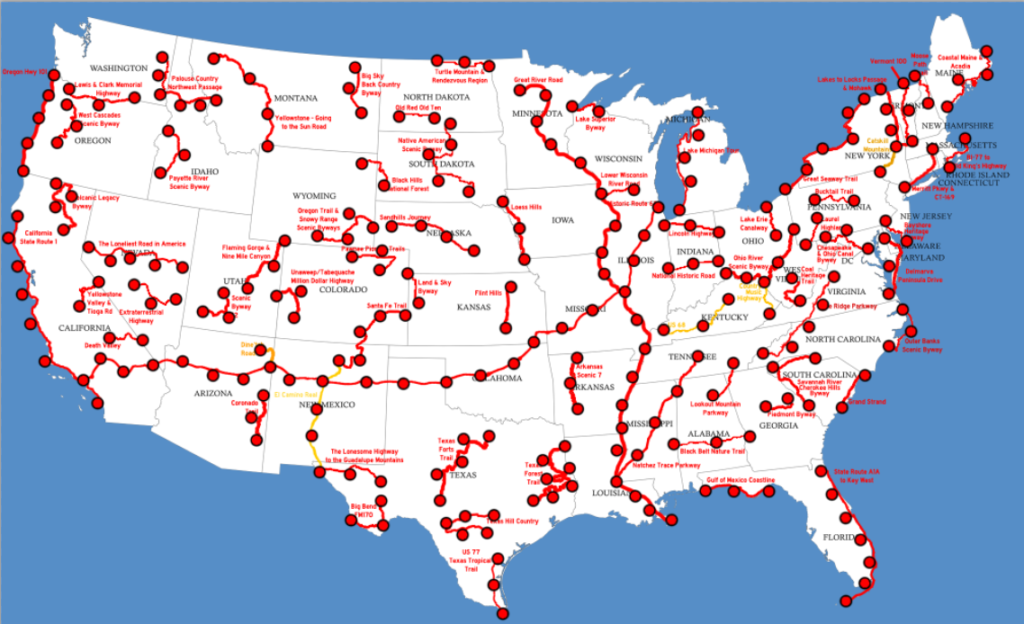Dev Diary posts are made to teach game development through specific examples from my latest project: Highways & Byways. Just here for Highways & Byways updates? Click here.
This week, I posted the first article in my 19-part suite on game design. It’s called How to Design the Core Engine of Your Board Game. The basic idea of the core engine is “what’s left when you strip a game of mechanics and obstacles. The core engine is a mix of the objective of your game and the feelings you want it to evoke. The core engine is the bare minimum set of mechanics and concepts you need to have a functioning (but not necessarily fun) game.”
Looking for more resources to help you on your board game design journey?
Here you go: no email required!
Like this writing style?
Check out my latest blog on marketing here.
That’s a dicey definition because it’s based on feelings and subjectivity. That’s why I want to give you a really specific example. I’m going to give you a peek into my early board game development process. This is how Highways & Byways was born.

All creative processes are different and individual. That’s why creativity is a form of self-discovery. This is my story and my story alone – don’t try to imitate it, just try to learn from it.
I’ve split this into five sections:
- The Inspiration – how I became interested in travel
- The Emotions – what I took from road travel and what I wanted to put in the game
- The Research – how I picked the roads you see on the board
- The Map – how the map came to be as a cohesive unit
- The Testing – how I confirmed this game had a chance
The Inspiration
When I was 22 years old, I had a bad case of wanderlust and more money than I’d ever had in my life (in retrospect, a really low bar). I had just graduated college and gotten my first job. About six months into my tenure, I took two weeks off, flew to Europe, slept in hostels, on planes, and on boats. I flew from Chattanooga to London on a three-part redeye flight (it was cheap!) and then took trains and buses to France, Spain, Italy, Germany, Denmark, the Netherlands, and back to the UK. It was amazing and a defining time in my life – it was a rough-and-tumble trip that involved sleeping in places not meant for humans to sleep, getting lost in places where I didn’t speak the language, and walking until my feet bled.
This lit a fire in me. I can’t do trips like that all the time – they cost way too much. However, I found out that road tripping across the United States and staying in budget motels is actually shockingly cheap. On a whim one night in 2015, my brother and I drove from Chattanooga to the Blue Ridge Parkway and slept with the backseats pushed forward and our feet in the trunk. This was in a 1990 Toyota Camry on the side of the road (which I do not recommend). We powered through fatigue and fear for some of the most beautiful, unspoiled land in the American southeast.

We did a similar trip down to the Mexican border in Brownsville, TX a month and a half later. Then I drove out to the Tail of the Dragon a month after that. A year later, I’d taken off a week to drive all the way to the Grand Canyon and Yellowstone. Five months after that, I drove to the Outer Banks of North Carolina. Then I drove to Maine six months ago.
At some point along the way, while seeing so many green highway signs pass, I said to myself “this would make a great board game.”
The Emotions
I noticed that long distance road trips came with a lot of emotions. There’s the magic of wanderlust. You experience amazement at new sights. You experience boredom and fatigue. You’re steeped in nostalgia as drift in and out of motels that were built in the Golden Age of Travel in the 1970s and not renovated since. (Color TV!)
These emotions have been baked into Highways & Byways. The most important one is the very specific emotion that comes with being in constant motion. The game’s mechanics center around that. There is also the feeling of 1970s nostalgia, which the art is specifically designed to evoke. The act of planning your destination with Byway Cards evokes the anticipation one feels when getting ready to travel. You’ll be pleased to know I left boredom and fatigue out of the game 😛

The Research
It’s one thing to feel a game, but it’s another thing entirely to create a game around that feeling. Some see the Highways & Byways board and wonder how I picked the roads I did. Famously, all the roads I picked are real roads and their position on the board is strikingly close to where they really are, with a little creative license for usability and prettiness.
I started out by checking for scenic byways in every single state. I was reading sites like My Scenic Drives, Scenic Byways Info, and even state tourism departments. Once I found a road I liked, I plotted the route in Google Maps, copied and pasted the shape, colored it red, and pasted it to the map. I later cleaned this up quite a bit, but my priority was just getting roads on a map at first. Usability would come later.

The Map
With around 100 scenic byways on the map, I had a lot of work to do to make the map work as a game. All the byways needed to connect. I needed to make sure I couldn’t get stuck. I needed to make sure I could go from Maine to California, Florida to Washington state, Texas to the upper peninsula of Michigan. The Byways were initially laid out like what you see below.

I eventually started connecting them with highway lines based on the routes of real US highways and interstates. I eventually smoothed them out to make a really clear message: byways are winding roads and highways are straight lines. The whole map was eventually connected as fluidly as the United States itself. I started placing spaces every 100 miles on byways and every 120 miles on highways. I later cleaned this up to reduce the number of spaces since it was an overwhelming amount of dots.
The Testing
After a ton of research, placing lines, and making spaces, I finally had it! That is, I had a map that I could move a piece along non-stop without getting stuck. This well-connected-but-ugly map and the feeling constant motion were my core engine. I had a functioning game, although not a very fun one and not one with any real objectives. Remember: this was before the game had a purpose! I was just designing the core engine of the game – no extra mechanics and no rules.
I tested this map alone over and over on Tabletop Simulator to make sure I could not get stuck. I kept doing this on my own before even getting my brother involved. Why would I waste the kid’s time? I had to make sure the game was even usable before getting anyone else involved or going any further.

As you can tell, building Highways & Byways is a long and winding road. This is just the story of how I built the core engine of the game. There is a lot more to it than what I’ve described here.
I hope that by sharing my creative process, you more easily find and define your own. If you’re reading this and you’ve got your own process, I’d love to hear about it in the comments below 🙂
Most Important Highways & Byways Updates
- James has delivered most of the Event Cards to me by now. You’re really going to enjoy it when I start posting it on social media!
- I’m struggling to find time to play-test right now. I’m learning Benefits at work which is, of course, beneficial, but it means overtime for a little while.





3 thoughts on “Birth of Byways: A Peek Into My Early Board Game Development Process”
That is cool seeing another perspective on designing a game and how it all starts to come together.
Thanks! Glad you liked it and I hope it’s a useful perspective for your designs.